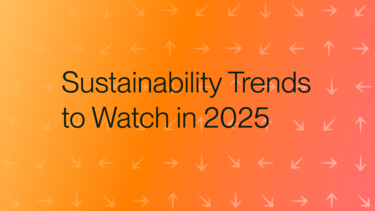Home – Regulations – Canadian Modern Slavery Act
Table of contents
- Modern Slavery
- The Canadian Modern Slavery Act
- Insights from the First Year
- How Anthesis Can Support
Share this guide
Modern Slavery
According to the International Labour Organization (ILO), 49.6 million people were living in modern slavery in 2021.
Modern slavery is defined by the United Nations as “situations of exploitation that a person cannot refuse or leave because of threats, violence, coercion, deception, and/or abuse of power”. It can take many forms, including human trafficking, forced labour, debt bondage/bonded labour, descent-based slavery, child slavery, forced or early marriage, and domestic servitude.
Although there are certain characteristics that can exacerbate the risk of modern slavery at geographic or industry levels, the exploitative practice is a global issue that impacts all countries and sectors. The vast nature of the problem requires action from all countries and companies alike. Fortunately, there are increasing global efforts to address modern slavery through regulatory initiatives, including Canada’s recent modern slavery act, the Fighting Against Forced Labour and Child Labour in Supply Chains Act (“the Act” or “The Canadian Modern Slavery Act”).
The Canadian Modern Slavery Act
The Canadian Modern Slavery Act officially went into effect on January 1, 2024, and concluded its first year of reporting on May 31st, 2024. The Act aims to address two forms of modern slavery in supply chains, forced labour and child labour, by mandating that certain entities that fulfill specified criteria report annually on the measures they take to prevent and reduce the risk of forced labour or child labour used in their business operations and supply chains.
Who must comply?
Companies are required to report under the Act if they produce, sell, or distribute goods in Canada or elsewhere and/or import goods into Canada, or control an entity engaged in any such activities AND:
- Are listed on the Canadian Stock Exchange; OR
- Have a place of business in Canada, do business in Canada, or have assets in Canada and meet two of the following three criteria for one of its two most recent financial years:
- $20 million or more in (global) assets
- $40 million or more in (global) revenue
- A (global) average of 250 or more employees
What are the requirements?
Eligible entities must produce annual reports – due by May 31st – that detail the following information:
- Steps they have taken to prevent and reduce the risk of forced labour and child labour in supply chains;
- Their structure, activities, and supply chains;
- Their policies and due diligence processes in relation to forced labour and child labour;
- The part of their operations and supply chains that are at higher risk of forced labour and child labour, and the associated steps they have taken to assess and manage the risks;
- How they remediate the loss of income to vulnerable families who may be impacted by the elimination of forced labour or child labour in the entity’s operations and supply chains;
- Trainings employees receive about forced labour and child labour; and
- How they measure their effectiveness in ensuring that forced labour and child labour are not used in their supply chains.
In addition to the required report, entities must also submit a supplementary questionnaire that collects the information necessary for complying with each of the Act’s reporting requirements.
Consequences for Non-Compliance
If companies who are required to fulfill the Act fail to do so, they could face:
- Convictions
- Fines of up to $250,000 CAD for providing false information or failing to comply with the law
Insights from the First Year of Reporting
In October of 2024, Public Safety Canada, the Canadian government branch dedicated to coordinating federal departments and agencies responsible for national security and safety in Canada, released a report summarizing the key findings from the inaugural reporting year. Over 5,700 entities filed responses to the Act, and of those, the largest reporting sectors included manufacturing, wholesale trade, and retail trade.
The report found that a significant number of entities (71%) have some due diligence policies and processes related to forced labour and child labour, but that there were still areas of opportunities for eligible entities, including:
Assessment of Risk
As a central requirement of the Act, entities must identify parts of their business and supply chains that carry a risk of forced labour and child labour and assess and manage that risk. Although risk assessments are an essential step in due diligence processes, the report found that many entities either have gaps in their assessment of risks (39.4%) or have not started assessing risks (22.5%) of forced labour or child labour in their activities and supply chains. Of the entities who have engaged in risk assessment activities, the most commonly identified risk areas included:
- the raw materials or commodities used in the entity’s supply chains
- the sector or industry it operates in
- tier 1 (direct) suppliers
- the locations of its activities, operations or factories
- the types of products it sources
Frequent mechanisms cited for preventing and reducing risks included a mandatory code of conduct, implementing supplier/vendor and/or partner screening, supplier self-assessments (SAQs), and conducting internal or third-party audits.
Remediation
Only 4% of reporting entities indicated that they had taken remediation measures for instances of forced labour and/or child labour . Of those, the most common actions were preventing forced labour or child labour and associated harms from reoccurring (e.g., working with local community partners to help support sustainable farm business models) and implementing grievance mechanisms. Many entities reported the availability of anonymous and non-retaliatory reporting mechanisms like hotlines, but only some but of identified specific remediation plans for cases of forced labour or child labour.
Effectiveness
While Public Safety Canada did not evaluate the effectiveness of the measures entities take to reduce the risk of forced labour and child labour in their operations and supply chains, reporting entities are required to indicate if they have policies and procedures in place to assess effectiveness of their activities. , 43.5% of reporting entities confirmed they had such policies and procedures, some of which included monitoring key performance indicators (KPIs) and conducting annual reviews.. Some examples of commonly reported KPIs were:
- number of cases of forced labour and/or child labour reported and solved;
- number of contracts with anti-forced labour and -child labour clauses;
- number of employees taking relevant training;
- age and number of hours worked per employee; and
- number of suppliers, vendors and/or partners that have signed a code of conduct.
How Anthesis Can Support
Whether you reported for the first time last year or are preparing to submit it for the first time this year, Anthesis can help you to design a fit-for-purpose program that meets your timing and budget needs. While our approach is determined by each client’s unique circumstances, our support often includes establishing an underlying human rights program strategy while simultaneously fulfilling the requirements of the Canadian Modern Slavery Act. An illustrative approach of this support includes:
- A comprehensive current state assessment that includes corporate document reviews and internal stakeholder engagement to understand human rights management among the company’s operations and supply chain. The findings from the current state assessment help determine the available information – and the information gaps to address – for fulfilling the Act’s requirements.
- Leveraging our industry-leading Supply Chain Slavery Risk Assessment Tool that measures modern slavery risks across a company’s supply chain. The tool aggregates dozens of global data sets to quantify each vendor’s risks based on geography, product type, business attributes, spend, and other custom information like audit results.
- Developing a gap assessment of current human rights management among the company’s operations and supply chain. The gaps are measured against both the Act’s requirements and the UN Guiding Principles on Business and Human Rights, both of which underpin strategic recommendations for how to address gaps and progress a human rights program forward.
- Supporting the development and submission of the report and supplementary questionnaire for the Act by May 31.
Our fundamental approach to the work, while tailored to each client, is designed to help achieve all requirements of the Act efficiently and with long-term strategy in mind.
Get in touch
Related Content
Get in touch
We’d love to hear from you
We are the world’s leading purpose driven, digitally enabled, science-based activator. And always welcome inquiries and partnerships to drive positive change together.









